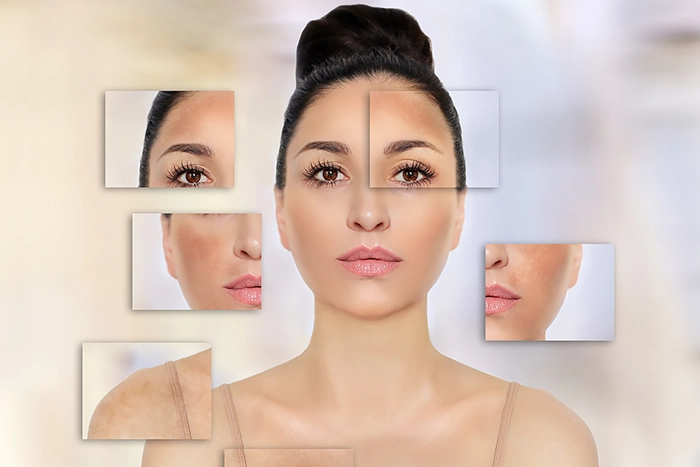List of All Services Offered By Prime Medic
List of All Services Offered By Prime Medic
List of All Services Offered By Prime Medic
List of All Services Offered By Prime Medic
List of All Services Offered By Prime Medic
List of All Services Offered By Prime Medic


If dark spots or hyperpigmentation has been bothering you for quite some time, it's time you breathe a sigh of relief. Today, you have more options than ever to not only get rid of those harmless yet undesirable dark patches but to prevent them from occurring again.
But what exactly is hyperpigmentation? It would be a patch of skin appearing darker than your natural skin tone, usually because your skin has been overproducing melanin.
The Cleveland Clinic states that there are four common factors behind hyperpigmentation, and they usually affect people to varying degrees, regardless of their skin tone.
The Mayo Clinic states that our body produces extra melanin to protect the skin against the sun's harmful UV rays. This excess melanin is responsible for tanning your skin. However, when sun exposure tends to be excessive or frequent, it can cause dark sunspots to appear.
Though sunspots are cancerous, sun-exposed skin can develop precancerous blemishes that look much like sunspots. Because of this reason, you must have your skin checked yearly to receive a clean online medical certificate from your doctor.
Skin trauma in the form of bug bits, acne, eczema, scraps, cuts, or vigorous rubbing and scratching can result in inflammation. Inflammation triggers pigment-producing cells that leave behind dark spots after the area is healed. The discolouration left behind after inflammation is usually called post-inflammatory hyperpigmentation.
Melasma refers to brown patches on the skin that can be seen in women who undergo frequent fluctuations in hormones, typically during pregnancy. Though it is common in women, men can also develop melasma.
Certain drugs, such as nonsteroidal anti-inflammatory drugs (NSAIDs), antimalarials, and antibiotics, are associated with the risk of developing hyperpigmentation. Certain chemotherapy drugs may also result in hyperpigmentation. Similarly, medical conditions, such as Addison's disease, can trigger hyperpigmentation because of increased melanin production in the body.
Fortunately, there are several scientifically proven steps you can take to treat hyperpigmentation. Let's take a quick look at them:
While your goal may be to lighten dark spots, using an over-the-counter moisturizer can help your skin in different ways. Ingredients like hyaluronic acid, glycerine, and retinol can improve cell turnover. On top of that, they also ensure that active brighteners can do their job more efficiently. Thus, using a good moisturizer will help your new skin cells remain healthy after replacing the old ones.
Many people take it lightly, but the best way to prevent sun-induced discolouration is to generously apply a broad-spectrum sunblock with an SPF of 30 or higher each day, preferably after every three hours, even on cool or cloudy days.
Because SPF can protect your skin from UVB short-wave rays, you should choose products containing Parsol 1789, Mexoryl, zinc oxide, titanium dioxide, or avobenzone to protect yourself from UVA long-wave rays.
Additionally, you should also avoid going outdoors from 10 a.m. to 2 p.m., because the sun tends to be the strongest.
If you are concerned about hyperpigmentation, it's helpful to seek advice early, as the appearance of dark spots can change over time. There are a range of skincare products available over the counter that may help improve the appearance of pigmentation. Ingredients such as glycolic acid, azelaic acid, retinoids, and vitamin C are commonly found in cosmetic products that aim to brighten the skin. For personalised advice on managing pigmentation, it's best to consult a qualified healthcare professional or dermatologist.
If over-the-counter products are not improving your skin concerns, it's best to consult a qualified healthcare professional or dermatologist. They can assess your condition and discuss suitable treatment options. Some treatments for pigmentation and skin concerns require a prescription, which can only be provided if deemed clinically appropriate after a medical consultation. Your doctor will guide you on the correct use of any prescribed treatment and advise on potential side effects, such as increased skin sensitivity.
If topical skincare products are not improving your skin concerns, a dermatologist may discuss other professional procedures, such as chemical peels or laser treatments, and help determine which approach might be suitable for your skin.
Besides sun protection and treatment, there are other steps you can take to prevent or minimize the occurrence of future dark spots. It's best to stick to gentle skincare products that don't burn or sting because irritation can trigger or worsen hyperpigmentation.
Hyperpigmentation is infamous for causing mental distress that can severely impact your self-esteem and quality of life. If no number of cosmetic products has done you any good, it is time you consider scheduling an appointment with our online doctors in Prime Medic.
Our doctors offer video consultations and can not only prescribe medications for your condition but can also help you to get online doctor's certificate.
Written By
Bachelor of Medicine and Bachelor of Surgery, AMC
CEO, Founder and Chief Medical Officer at Prime Medic
Dr. Mohsin leads clinical governance and quality at Prime Medic. He works on improving digital access to evidence based medical advice and timely follow up. His aim is to help patients get clear guidance that is accurate, current, and easy to act on, no matter where they are.
View Profile